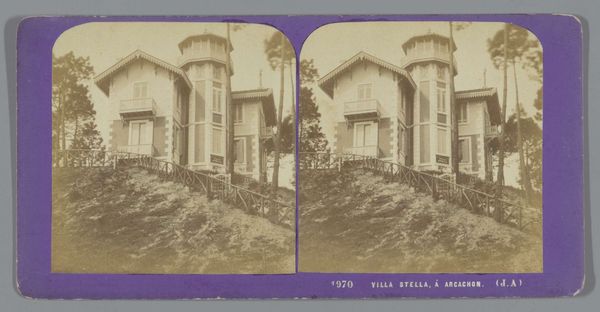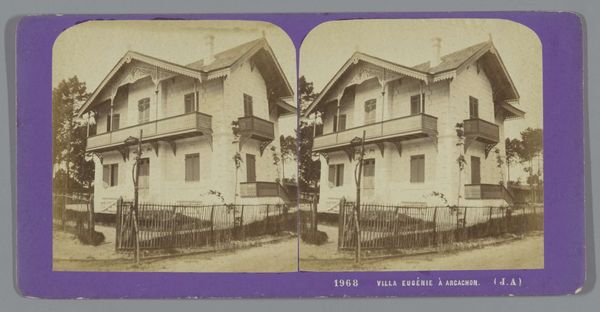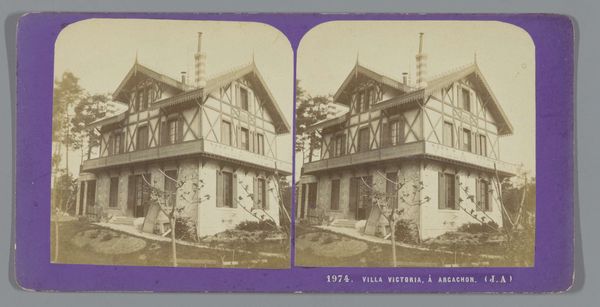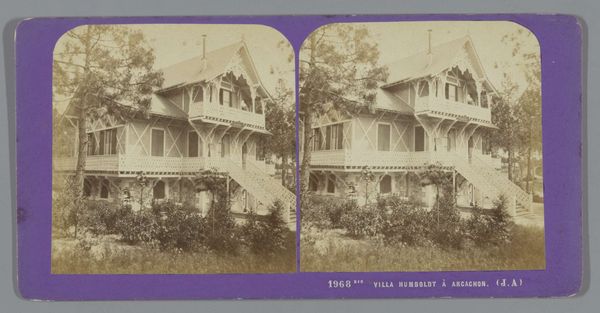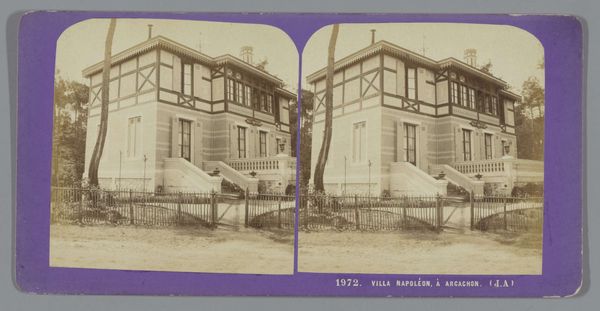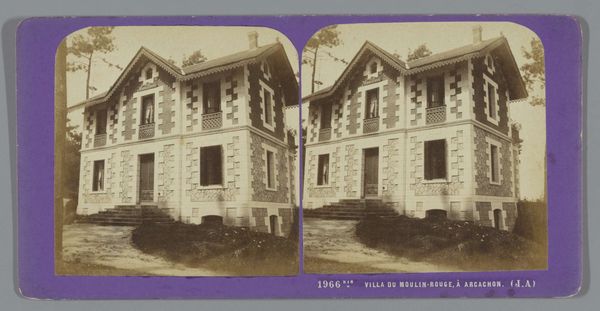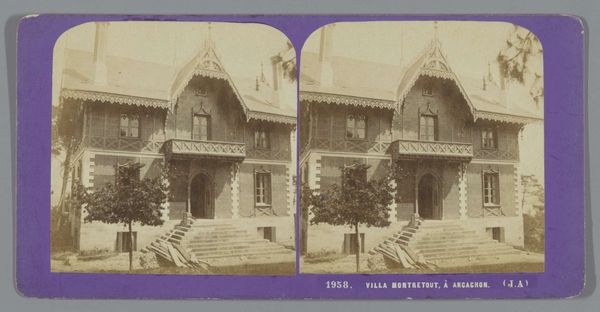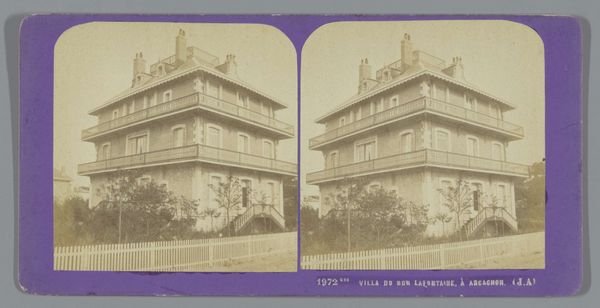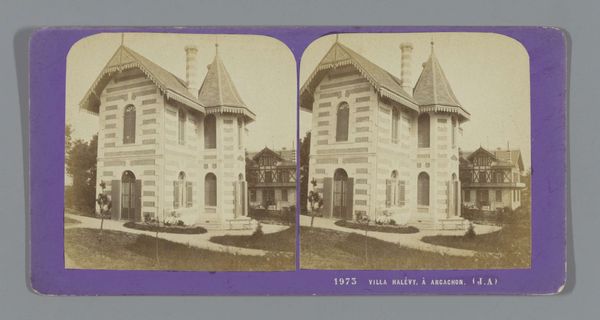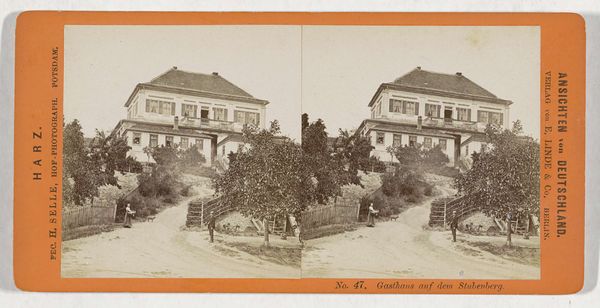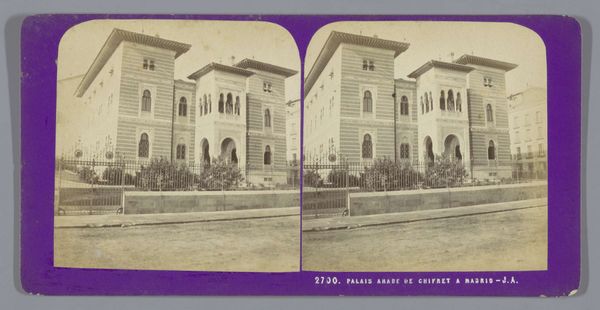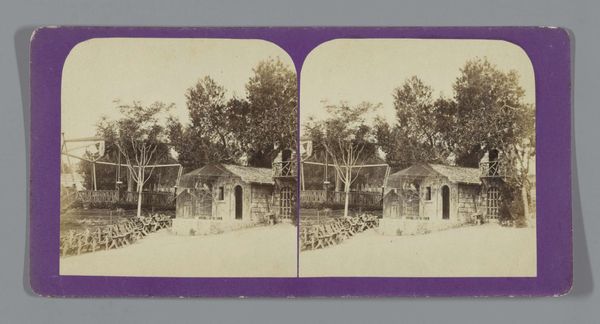
photography, architecture
#
landscape
#
photography
#
architecture
#
realism
#
building
Dimensions: height 85 mm, width 170 mm
Copyright: Rijks Museum: Open Domain
Editor: So, this is “Exterieur van de Villa Fauvette te Arcachon” by Jean Andrieu, taken sometime between 1862 and 1876. It’s a photograph, focusing on architecture. The villa has a very domestic, comfortable feel, even humble somehow. How do you interpret this work, especially considering its historical context? Curator: The photographic image, beyond just documenting a building, captures a specific moment in the history of representation and social class. Photography during this period was becoming more accessible, yet the subjects – here, a villa – often represented the burgeoning middle class and their aspirations to a certain lifestyle. Editor: That’s interesting. I hadn’t considered the role of photography itself as a class marker. Curator: Precisely. Consider also the setting. Was Arcachon a resort town, a space of leisure only accessible to certain social strata? The architecture itself speaks to that, a blend of rustic and refined elements reflecting a conscious construction of identity. Who are the occupants, we wonder, and what does this "exterieur" conceal about the "interieur", not just of the villa but of society at large? Editor: That makes me think about how the 'gaze' functions here too - both the photographer's and ours, as viewers today. It's a privileged view, isn't it? Curator: Exactly! Photography, then as now, frames power dynamics. We need to be critical of what is included, what is excluded, and who controls the means of representation. Understanding that photograph does much more than showing us a house. It's the construction of an ideological world through image making. Editor: This really reframes how I see the photograph, not just as a static image, but as an active participant in social dialogues of its time. Curator: And ours, because such dialogues continue to evolve even today.
Comments
No comments
Be the first to comment and join the conversation on the ultimate creative platform.
